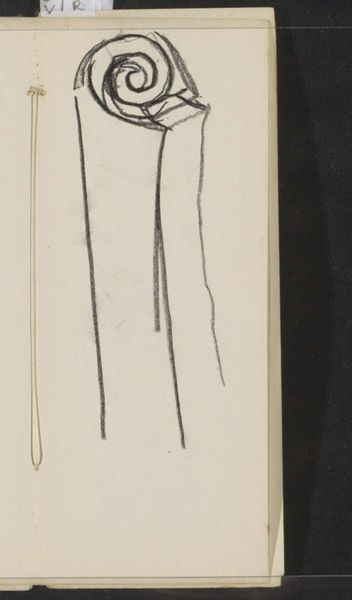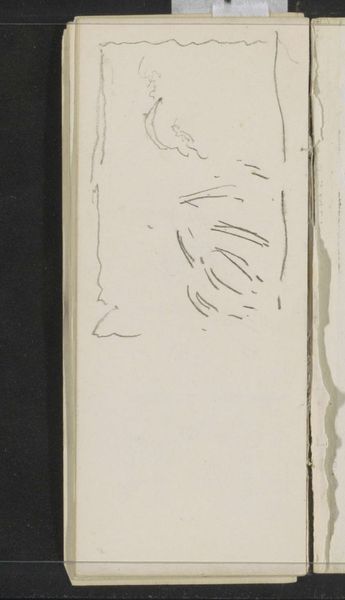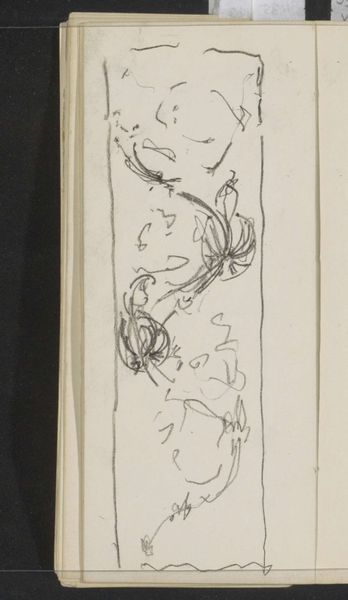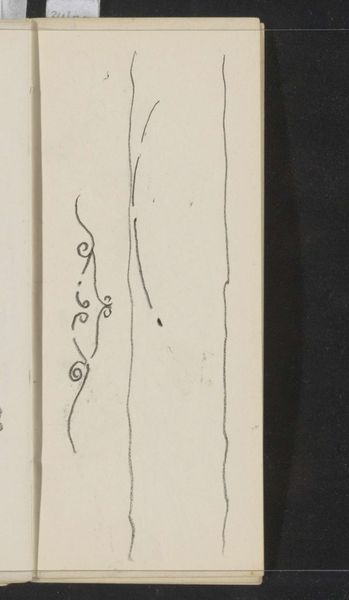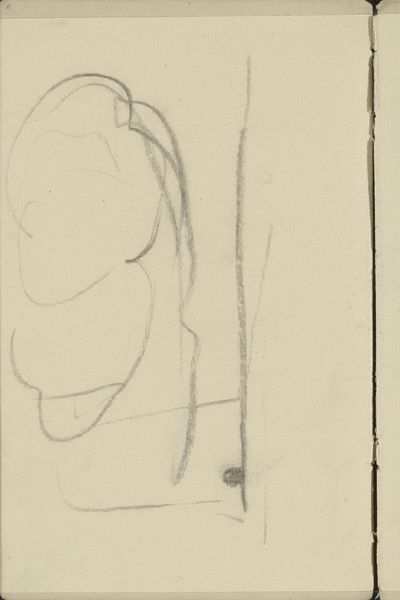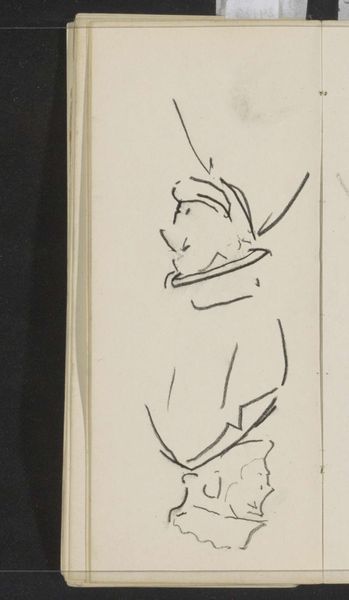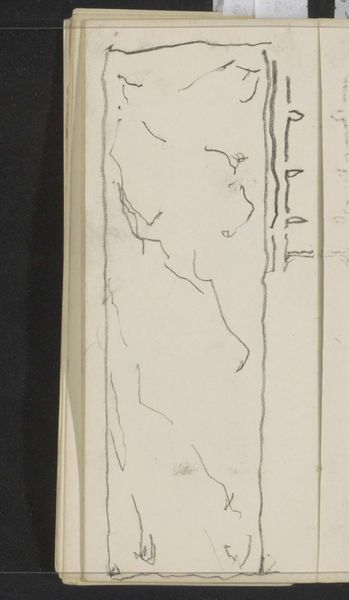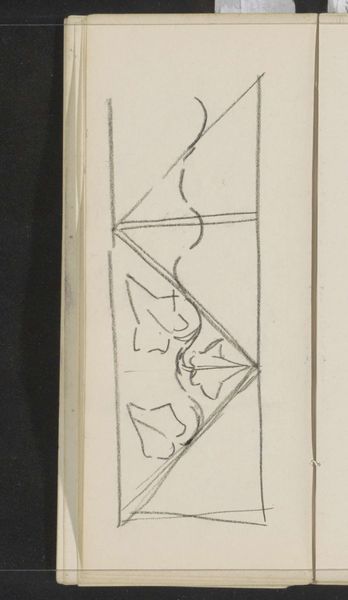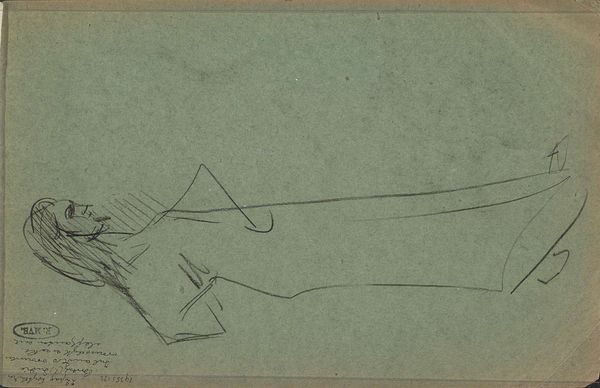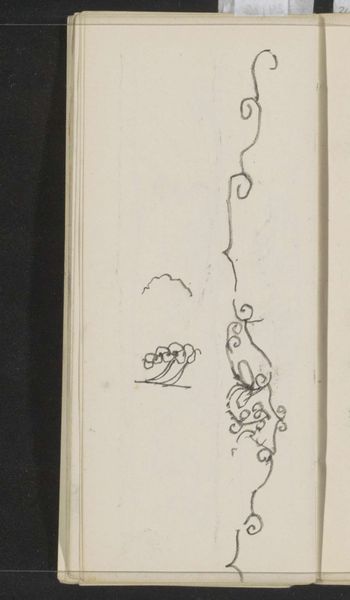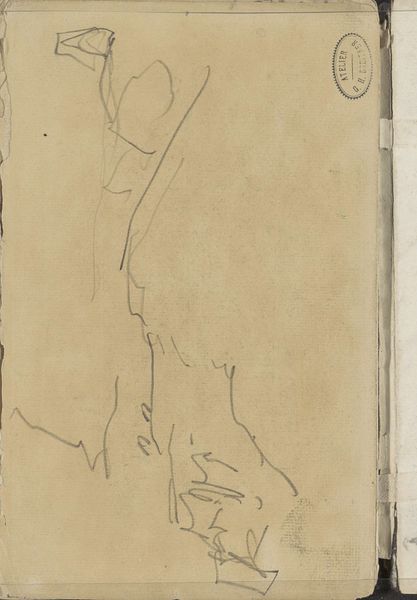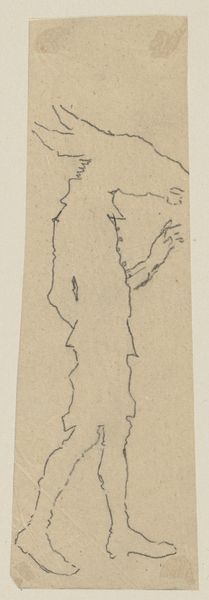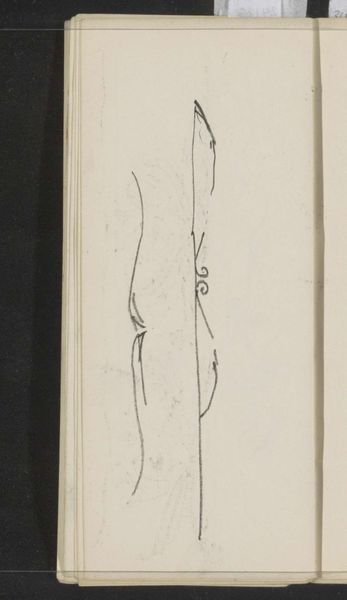
drawing, paper, pencil
#
drawing
#
paper
#
pencil
#
abstraction
#
line
Copyright: Rijks Museum: Open Domain
Curator: Here we have Gerrit Willem Dijsselhof’s "Band met rolwerk," a pencil drawing on paper created around 1901. Editor: My immediate reaction is that it feels incredibly spare, almost unfinished, but the linear quality is quite striking. Curator: Indeed. I'm interested in the process of creation, the physicality of pencil on paper. Dijsselhof's use of a simple medium allows the form itself to take precedence, blurring lines between utility and craft. The support is almost incidental; what truly holds meaning is the physical inscription and artistic touch that the paper signifies in terms of Dijsselhoff's practice as a designer. Editor: And when situated within its historical context, you understand that this seemingly 'simple' drawing reflects a larger movement towards abstraction within art and design during that period. It represents a visual break from strict representationalism—how it sought new ways of engaging with aesthetics beyond established norms. This abstraction, arguably a pushback against industrial uniformity, invites us to rethink existing categories around art and labor. Curator: Precisely, because this almost gestural work really puts into question conventional roles—especially because of how little is represented. Considering its design applications—where it will be printed, carved, stitched. And while some could see its medium as limiting, I believe Dijsselhof truly found freedom by allowing his skill of manipulating a singular material shine—elevating functional artwork to fine art. Editor: When viewing this work, you cannot overlook questions of authorship and access in arts history; who gets remembered? Also, it invites reflections on labor—whose time and effort allowed this simple doodle, a material scrap, to now sit inside museum walls and exist beyond private property? The artwork as an emblem of inequitable structures? Curator: It certainly pushes one to think about materiality in context. The lines, form, design, all hold importance, yes, but even the production means and material constraints invite new understandings and broader accessibility to art creation. Editor: In short, it's fascinating how such a seemingly minimalist sketch can unravel a world of deeper artistic, material, and sociopolitical questions.
Comments
No comments
Be the first to comment and join the conversation on the ultimate creative platform.
